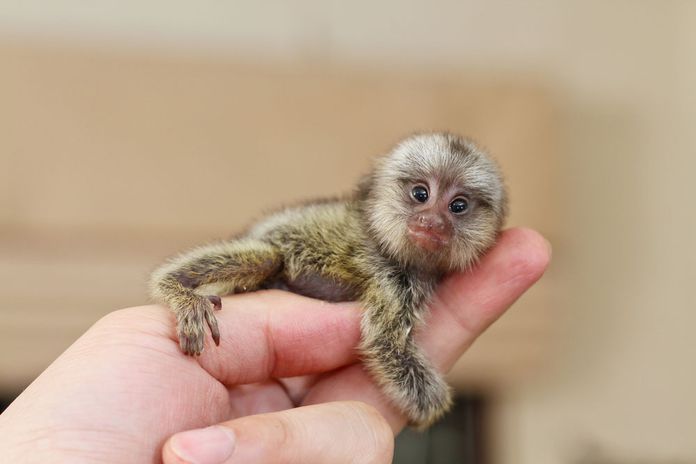[ad_1]
Many people keep dwarf hamsters as pets. And why not? They’re cute, lovable little fur balls that can provide hours of joy and entertainment. But in order to get the maximum enjoyment from your little pocket pet, you’ll want to be able to handle and play with him confidently. You’ll need to tame your dwarf hamster.
How you familiarize your hamster with his new surroundings – and with you – is crucial to establishing a warm and lasting bond. Keep in mind that when you bring your hamster home, he is quite frightened.
Alien Abduction
Try to imagine what it must be like for him – he’s just been kidnapped by aliens! He’s been plucked out of his comfortable surroundings, stolen from his litter mates, shut into a little cardboard box, and been subjected to all sorts of new sensations… unfamiliar smells… disconcerting motion… strange noises… It would be closely akin to you being blindfolded, imprisoned in a dark, cold cell, and taken on a spaceship to the far ends of the universe – never to see your family again. So, when you bring your hamster home, your first order of business is to gain his trust and establish a bond with him.
It’s crucial that you have set up a “hamster friendly” cage for your new pet before you ever bring him home. Place the box in which you brought him home inside the cage and open it. Don’t force your diminutive friend to leave the safety of the box before he’s ready. Allow him as much time as he needs to emerge. This minimizes the amount of stress that he has to cope with.
Be patient, he’ll come out when he’s ready.
Once he does venture out, resist the urge to start handling him immediately. In fact, experts in the field of animal behavior suggest that you leave the cage in a dark, quiet room for up to five days. This gives your hamster time to calm down and familiarize himself with his new home. (Remember, hamsters live underground. So “dark” does not equal “scary” to him.)
Take Advantage of His Nature
Hamsters rely most heavily on their senses of hearing and smell. So, during this “period of darkness”, as you are supplying your new pet with fresh food and water every day, you should talk to your hamster in a soft, calm manner. He needs to get used to the sound of your voice. You don’t need to restrict your “conversations” to the times when you feed him, however. Talk to him frequently. (Don’t know what to say to a hamster? Try reading to him!) Additionally, around the fourth day or so and continuing for several days afterward, start “introducing” yourself by placing a tissue with your scent on it in his cage.
At this time you may also start to feed your hamster special treats. Sunflower seeds or pumpkin seeds are good choices as long as you don’t overdo it. Seeds are fattening and a fat hamster is an unhealthy hamster. In addition, you may try offering tidbits of uncooked veggies – nothing from the onion family, however. Again, just give very small quantities. You have yet to determine what “people food” your hamster tolerates well; you don’t want to upset his delicate digestive system.
Getting Acquainted
Once you feel that your hamster is comfortable with his new environment and your presence, it’s time to start getting better acquainted. Slowly open his cage door, put in the tissue as before, then carefully put your hand in the cage. Don’t wiggle your fingers or try to pick him up. The goal here is to get your pet to associate the aroma, with which he has become so familiar, with you.
He may approach your hand and sniff it. He may even crawl onto your hand. Don’t move. Just let him investigate. Should he nip, don’t panic. Just slowly remove your hand from the cage and close the door. Try again in a few minutes. If your pet still attempts to bite you, withdraw your hand and wait a day, then repeat the process.
It is very important that you are patient with this procedure. It may take quite a while, maybe even as much as a couple months, but don’t get discouraged and rush the process. The rewards of taking it at your hamster’s pace are worth the effort. You’ll soon be enjoying a wonderfully fulfilling relationship.
Making Your Dwarf Hamster Your Best Friend
The next step in this “getting to know you” ritual is to try to pet him. Again, this may take some time. Repeat the steps for putting your hand in his cage then attempt to pet his back. Don’t sneak up on him. Just slowly and carefully move your hand towards him and stroke his back with the tips of your fingers.
Once the furry little guy accepts being touched, you’re ready to try moving him to his out-of-cage playpen. You don’t want to just pick him up and carry him there. That will certainly frighten him. If you’ve purchased a hamster ball, this is the ideal vehicle for transporting him until he is more comfortable with you holding him.
The play area doesn’t need to be elaborate, but it does need to be secure. Some dwarf hamster owners have found that a bathtub is ideal – with a few modifications. Cover the drain and put something on the floor of the tub so that he has a no-slip surface. Then add a few hamster toys for your friend to play with.
Arrange it so that your hamster has to walk over your hand to get into his play area. Simply place whatever container you used to transport him in the playpen and put your hand in front of the opening. He may not do this at first. If he doesn’t, just take him back to his cage and try again later. When you are successful, let him play, supervised but undisturbed, for about a half hour or so. Place your hand where he can smell it and crawl over it. Stroke his back if he allows it.
Eventually you will be able to sit and play with him, but don’t rush. You’ve made it this far, no sense in risking going backwards with the whole process. Your main objective should be to establish yourself as a non-threatening presence.
Going Forward
It’s now time for you to occupy his play space with him. The most important thing to remember is to let your hamster’s behavior tell you when it’s time to go further. As you did when you introduced yourself in his cage, always present a scented tissue first, then your hand, then you. Just sit on the floor near him and follow his lead. Let him sniff you, crawl on you, climb up your arm – whatever he feels comfortable with.
This entire process, from “alien abductor” to “new best friend”, can be rather lengthy. Don’t get discouraged. Take your time making friends with your dwarf hamster on his terms and you will soon be enjoying a delightfully satisfying relationship that will last for years to come.
[ad_2]
Source by Nancianne Beetleman




